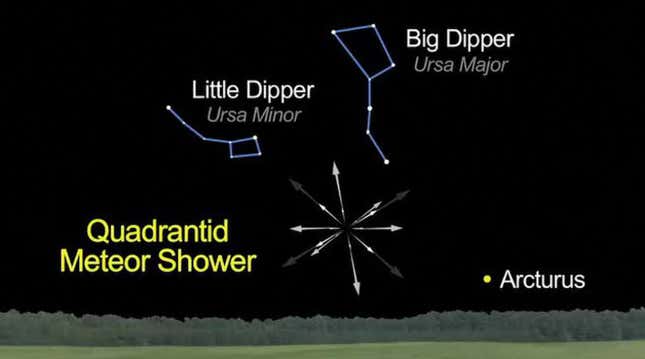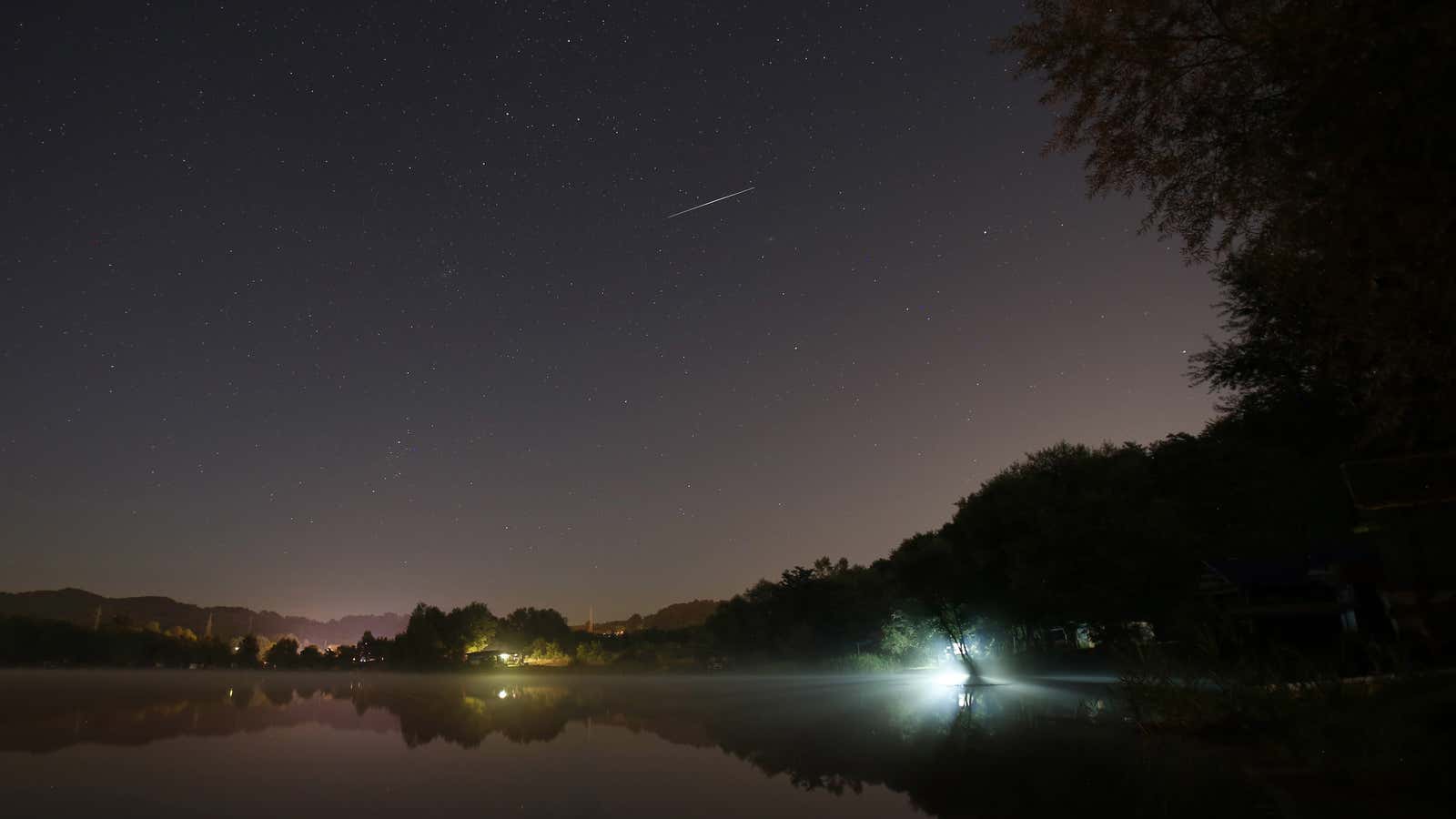The Quadrantids, active each year from the end of December to early January, is the only major meteor shower that rings in each new year.
Unlike other meteor showers that tend to stay at their peak for a couple days, the Quadrantids are fleeting: They peak for only a few hours on the night of Jan. 3 and morning of Jan. 4. During peak hours, stargazers can expect to see up to 40 meteors per hour, according to NASA’s Hubble Space Telescope mission team—a little less than typical years because the light of the near supermoon will wash out fainter meteors.
This year, the peak will occur between 3pm and 4pm US eastern time; but don’t worry: if nighttime comes to your region before or after the window, you can still enjoy the Quadrantids outside of its peak. If you’re lucky enough to be in the northern hemisphere and night falls in your local region within the one-hour window, you’re in for a treat. Grab a blanket, remove yourself from any light pollution, and enjoy a surreal experience.
What is a meteor shower?
When space rocks known as meteoroids—often no bigger than grains of sand—collide with Earth’s atmosphere, they burn up and create tails that look like bright streaks. These are what we call meteors. If they reach the ground, they’re called meteorites. (The Quadrantids won’t turn into meteorites because they’re too small to survive the descent.)
On a typical night, you might expect to see a handful of meteors per hour—anywhere from two to 16, according to the American Meteor Society, depending on the time of day and year. When Earth plows through a stream of meteoroids, creating a much higher rate of meteors, we call it a meteor shower.
Most meteor showers originate from comets, which produce lots of meteoroids that create a nighttime display if they intersect with Earth’s orbit. The Quadrantids, on the other hand, come from an asteroid called 2003 EH1, which orbits the sun every five-and-a-half years.
How do I get the best view of the Quadrantid meteor shower?
Like the supermoon, you can watch the meteor shower sans special glasses and without the aid of a telescope. If you’re in a cold area, dress warmly and grab a blanket to lie down (ideally somewhere far away from light pollution). It’ll take 20-30 minutes for your eyes to adjust to the dark.
The shower will be visible below the Ursa Minor constellation, most commonly called the Little Dipper in North America, and the Big Dipper. If you’re having trouble identifying both constellations, look for the brighter Big Dipper, and use the two stars that trace the outer edge of its ladle to point you to Polaris, the North Star. Look beneath the constellations to catching the falling meteors’ tails.

